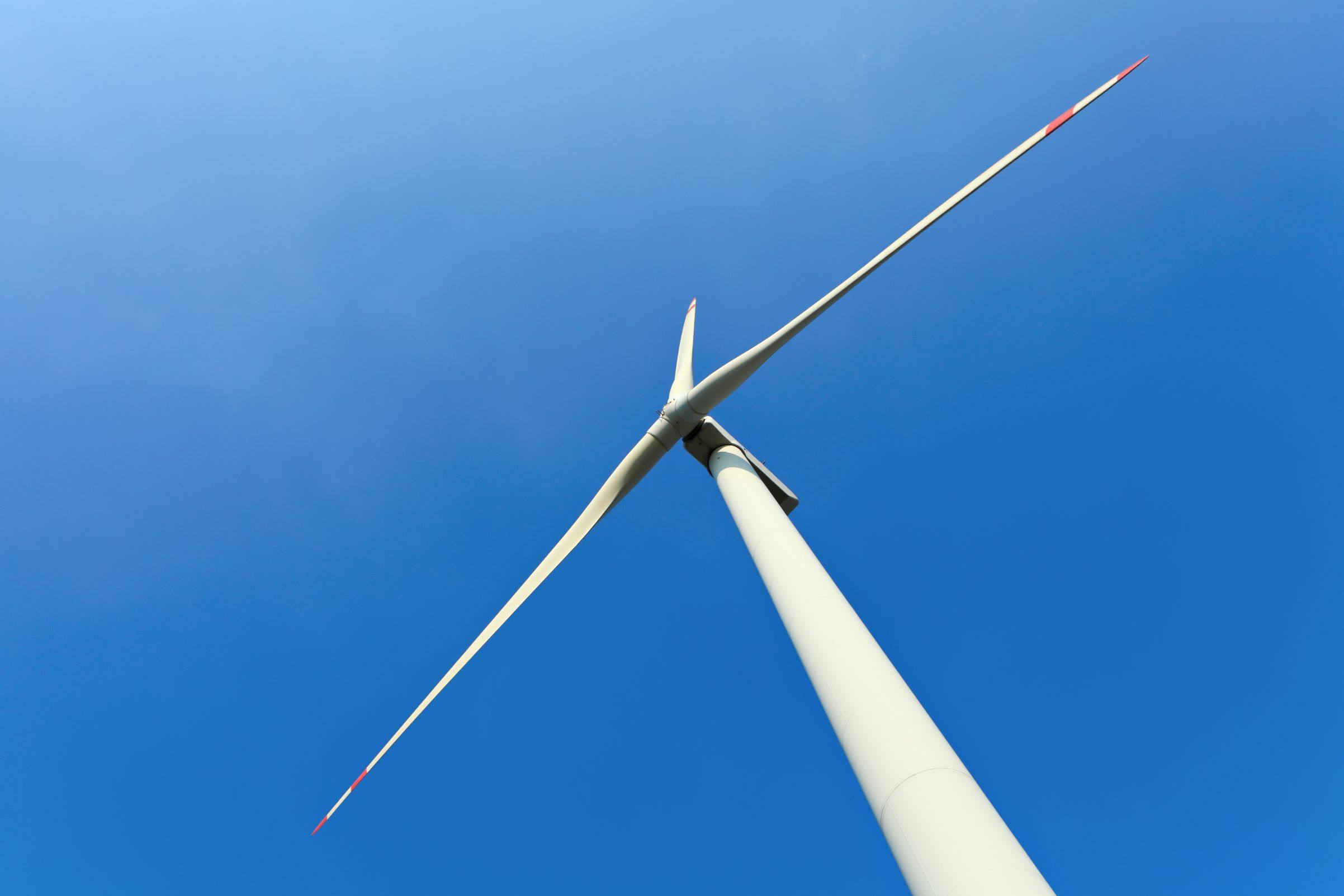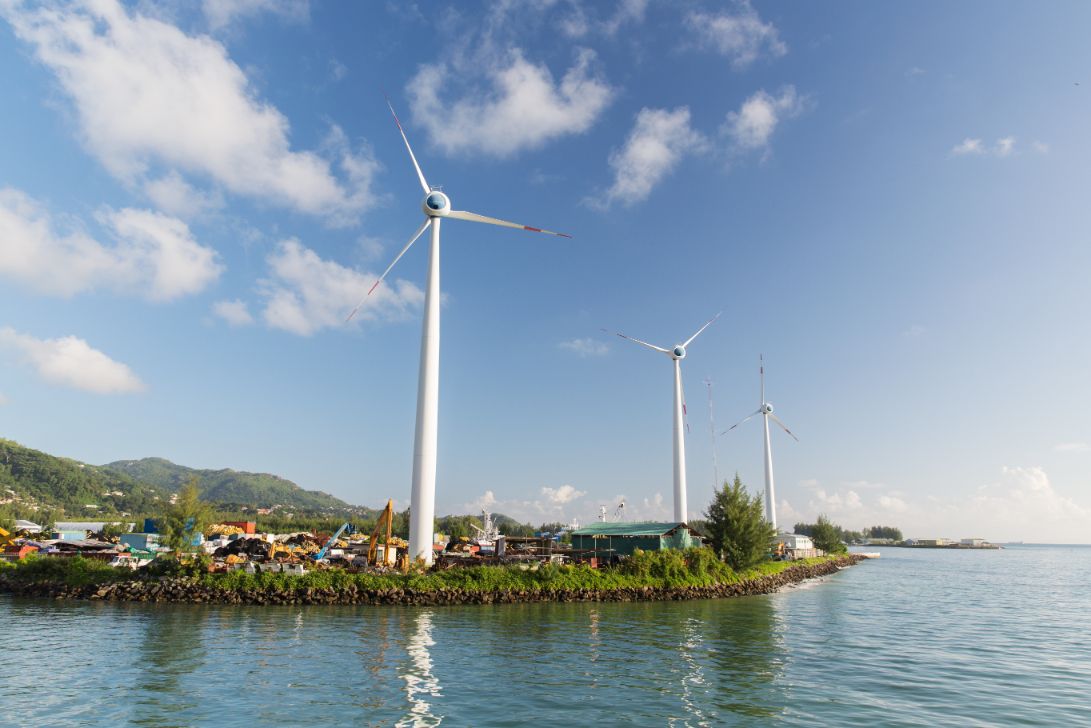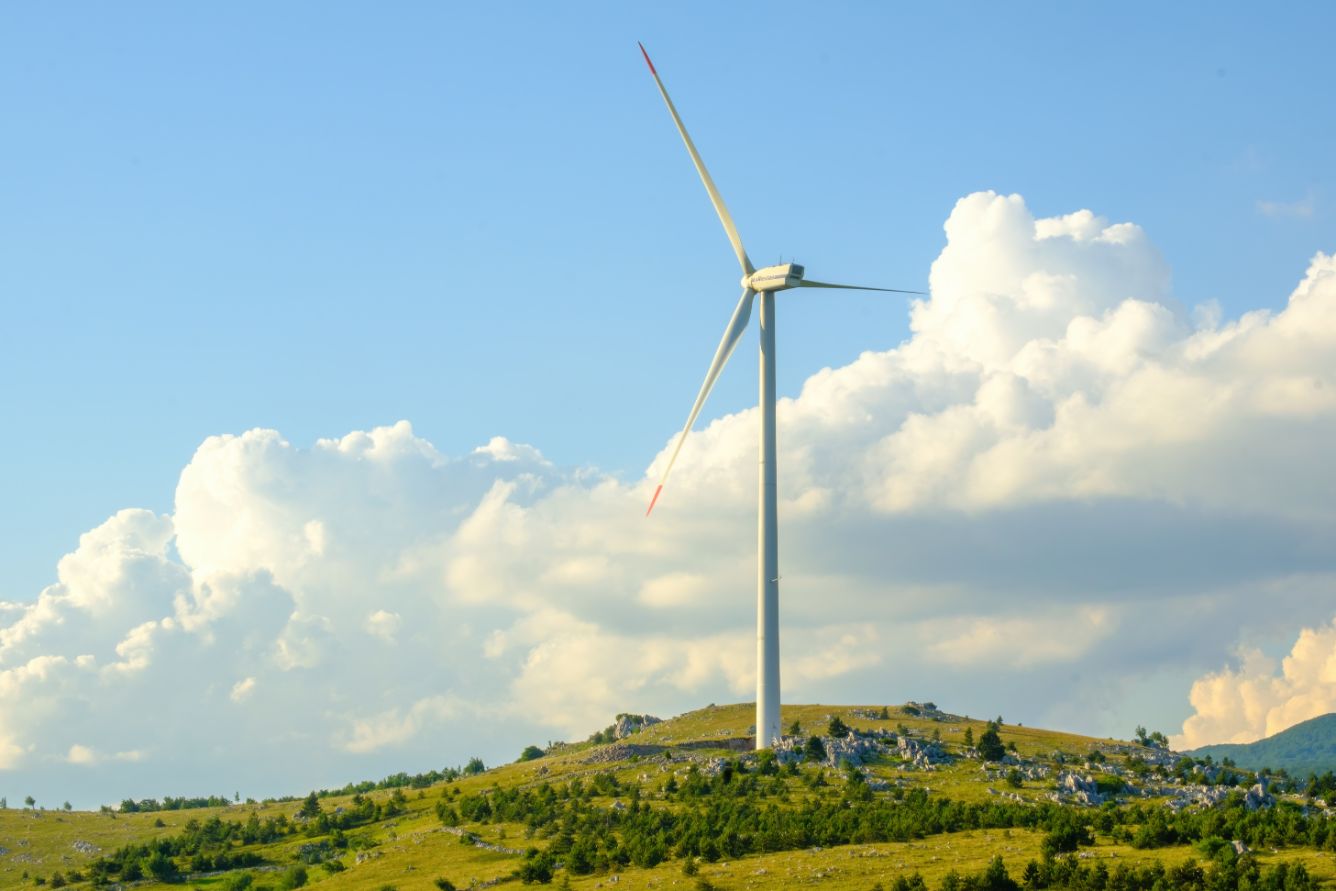What are the Sources of Wind Energy?
The sources of wind energy is Wind Blow, the equation for wind power. To harness this energy, we must understand the critical factors involved, which include the Wind Speed, Density Of The Air, and the Swept Area Of The Turbine.
Wind Speed

Wind energy stands as a testament to humanity’s ongoing commitment to harnessing the forces of nature for the greater good. Among the multitude of factors influencing the efficacy of wind energy production, wind speed emerges as a pivotal determinant. The very essence of wind energy relies on the velocity of the wind, a variable that profoundly influences the energy harvest from this sustainable source.
In this in-depth exploration, we will embark on a journey through the intricate world of wind speed and its profound impact on wind energy. We will dissect the nuances of how wind speed drives energy production, influences wind turbine design, and contributes to the reliability and cost-effectiveness of wind energy. Furthermore, we will delve into the broader implications of wind energy as a clean, renewable resource that holds immense potential for global sustainability.
How Wind Speed Affects Wind Energy Production
At its core, wind energy production revolves around a simple premise: the faster the wind speed, the more electricity a wind turbine can generate. This fundamental relationship between wind speed and energy output serves as the cornerstone of wind energy’s viability. To comprehend the depth of this connection, we must consider several key aspects:
Proportional to the Cube of Wind Speed
The power harvested from wind is proportional not just to the wind speed itself but to the cube of the wind speed. This means that even small increases in wind speed can lead to significant gains in energy production. In essence, if the wind speed doubles, the energy generated increases by a factor of eight. This exponential relationship underscores the importance of high wind speeds for maximizing energy output.
Strategic Placement
To capitalize on this principle, wind turbines are strategically located in areas with consistently high wind speeds. These locations may include hilltops, offshore sites, or open plains, where the prevailing winds offer the greatest potential for energy generation. The choice of location is a critical decision in wind energy development, directly impacting both the energy output and the cost-effectiveness of wind turbines.
Enhanced Cost-Effectiveness
Higher wind speeds not only result in increased energy production but also enhance the cost-effectiveness of wind turbines. The greater energy yield per turbine allows for quicker returns on investment and lower electricity production costs. Thus, wind energy becomes a more competitive and sustainable option in regions blessed with favorable wind conditions.
Wind Speed and Wind Turbine Design
Wind turbine design represents a sophisticated interplay of engineering, aerodynamics, and meteorological factors, with wind speed as a central consideration. The design of a wind turbine, specifically the length of its blades, is closely tailored to the wind speed conditions at the installation site. This adaptability is crucial for optimizing energy capture:
Blade Length and Wind Speed: Wind turbines with longer blades are more efficient at capturing energy from low wind speeds. These turbines are designed to maximize energy extraction even when winds are relatively calm. In contrast, turbines with shorter blades are better suited for high wind speeds, preventing overloading and ensuring safety during storms or extreme weather events.
Customized Design: The optimal blade length for a wind turbine depends on the specific wind conditions at the site. Wind energy developers carefully select turbine models and blade designs that align with the anticipated wind speeds. This bespoke approach ensures that the turbine operates at peak efficiency while minimizing wear and tear.
Safety Measures: Wind turbines are equipped with sophisticated control systems that monitor wind speed in real-time. When wind speeds exceed predefined safety thresholds, these systems initiate shutdown procedures to protect the turbine from damage. This safeguarding mechanism underscores the importance of understanding and managing wind speed fluctuations.
Wind Speed Variability
Wind speed is inherently variable, both temporally and spatially, posing challenges to the reliability of wind energy production. Several factors contribute to this variability, including diurnal patterns, seasonal changes, and weather conditions. However, advancements in wind turbine technology and wind forecasting have substantially improved the predictability and stability of wind energy production:
- Time and Seasonal Variability: Wind speed can vary throughout the day and across different seasons. Understanding these patterns is crucial for optimizing energy production and grid integration. Wind turbines are designed to operate within specific wind speed ranges, and variations outside this range can impact energy yield.
- Weather Patterns: Weather events, such as storms and wind fronts, can introduce sudden and drastic changes in wind speed. Wind turbines are equipped with advanced anemometer systems and control algorithms to respond to these fluctuations and ensure safe and efficient operation.
- Wind Energy Forecasting: Wind energy forecasting has become an essential component of wind farm management. Accurate predictions of wind speed and energy production allow grid operators to prepare for fluctuations in wind energy supply, ensuring a reliable and stable power supply to consumers.
Benefits of Wind Energy
Wind energy’s significance extends beyond its reliance on wind speed as a driver of power generation. It holds a prominent place among renewable energy sources for several compelling reasons:
- Clean and Renewable: Wind energy is a clean and renewable energy source, producing electricity without the combustion of fossil fuels or the emission of greenhouse gases. This characteristic makes wind energy a critical player in the transition to a low-carbon energy future.
- Domestic Resource: Wind power is a domestic resource that contributes to economic growth and energy independence. Wind turbines operate in all 50 states of the United States, generating a substantial portion of the nation’s energy needs.
- Cost-Effective: Land-based, utility-scale wind turbines offer one of the most cost-effective energy sources available today. Ongoing advancements in wind energy science and technology continue to drive down costs, making wind power increasingly competitive.
- Technological Advancements: The evolution of wind energy technology is characterized by ongoing innovation. Research and development efforts have resulted in more efficient turbine designs, improved materials, and enhanced forecasting techniques, further solidifying wind energy’s position as a sustainable energy solution.
Wind speed stands as a critical factor in unlocking the vast potential of wind energy. Its impact on energy production, turbine design, and the overall cost-effectiveness of wind energy cannot be overstated. The pursuit of higher wind speeds has led to the strategic placement of wind turbines in locations that offer optimal wind conditions, ensuring the highest possible energy yield.
Furthermore, advancements in wind turbine technology, forecasting accuracy, and grid integration have bolstered the reliability and viability of wind energy. As a result, wind power plays an increasingly prominent role in the global transition to sustainable, clean energy sources.
Density Of The Air

Wind energy, a cornerstone of renewable power generation, relies on several intricate factors for its efficient and sustainable operation. Among these, the density of the air takes center stage as a pivotal element. The density of the air is not a static parameter; rather, it dynamically influences the potential for energy harnessing by wind turbines. It is profoundly affected by temperature, pressure, and humidity levels within the atmosphere, shaping wind energy production in ways that extend beyond mere meteorological curiosity.
Throughout this comprehensive exploration, we will dissect the multifaceted relationship between air density and wind energy. We will unveil the intricate dance between temperature, pressure, humidity, and altitude, and how these variables collectively determine the density of the air. Moreover, we will elucidate the profound impact of air density on wind turbine performance, wind farm site selection, and the precision of wind energy forecasting.
Understanding the Dynamics of Air Density
To grasp the significance of air density in wind energy, we must first understand its fundamental dynamics. Air density is a measure of how tightly air molecules are packed together within a given volume of space. It influences the kinetic energy that wind carries, thereby affecting the amount of energy that wind turbines can harness. The key factors shaping air density are:
- Temperature: Warm air is less dense than cold air. As temperature rises, air molecules move faster and disperse, reducing air density. Conversely, colder air is denser, providing wind turbines with a more substantial energy source.
- Pressure: Air pressure varies with altitude. Higher altitudes have lower air pressure, resulting in lower air density. Understanding this pressure-density relationship is essential for optimizing wind turbine placement.
- Humidity: Humid air contains water vapor, which is less dense than dry air. Consequently, humid conditions lead to decreased air density, impacting wind energy potential.
- Altitude: As we ascend in altitude, air density decreases. This reduction in density influences wind speed, making higher-altitude locations preferable for wind energy generation.
Altitude’s Influence on Air Density and Wind Speed
The correlation between altitude and air density is particularly noteworthy in the context of wind energy. Wind turbines sited at higher altitudes enjoy several advantages over their lower-altitude counterparts. Due to the inverse relationship between altitude and air density, turbines at higher elevations experience:
- Increased Energy Capture: The lower air density at higher altitudes allows wind turbines to capture a more substantial amount of energy from the wind. This elevation advantage translates directly into enhanced power generation.
- Higher Wind Speeds: Wind speeds tend to be higher at greater altitudes, further enhancing the potential for energy capture. This phenomenon is especially valuable in regions with variable or low wind speeds at ground level.
- Extended Operational Lifespan: Wind turbines situated at higher altitudes benefit from more consistent and stronger winds, potentially extending their operational lifespan and improving long-term efficiency.
Benefits of Understanding Air Density in Wind Energy
The significance of comprehending air density in wind energy extends far beyond meteorological interest; it underpins several critical aspects of wind energy production and utilization:
1. Improved Wind Turbine Efficiency
Understanding the influence of air density empowers wind turbine designers to optimize their designs for specific locations. By tailoring wind turbines to the unique density characteristics of a particular area, designers can improve efficiency, resulting in greater power generation. This optimization process includes blade design, turbine height, and even the choice of wind turbine model, all of which can be customized to maximize energy capture.
2. Better Site Selection
In the pursuit of sustainable wind energy, site selection plays a pivotal role. Air density considerations can guide developers to choose locations where the air is denser, thus facilitating higher power generation. These sites offer a significant advantage over areas characterized by less dense air. By strategically selecting sites with optimal air density, wind energy developers can unlock the full potential of their wind turbines.
3. Enhanced Wind Energy Forecasting
Accurate wind energy forecasting is vital for the efficient operation of wind turbines and their integration into the power grid. Understanding the dynamics of air density contributes to more precise wind energy forecasting. By factoring in temperature, pressure, and humidity data, forecasters can refine their predictions, offering valuable insights into the expected energy output of wind turbines. This, in turn, enables grid operators to plan for the seamless integration of wind energy into their systems, reducing reliance on fossil fuels.
4. Environmental Impact Assessment
Wind energy’s sustainability extends to its environmental impact. Understanding air density and its impact on wind energy allows for more comprehensive environmental impact assessments (EIAs). EIAs can evaluate how wind energy projects affect local ecosystems, wildlife, and communities, ensuring that wind farms are developed responsibly and harmoniously with their surroundings.
5. Policy and Investment Decisions
Air density considerations are vital for policymakers and investors. Governments and financial institutions can use this knowledge to make informed decisions about wind energy subsidies, incentives, and investments. Understanding the impact of air density on energy production can guide the allocation of resources, promoting the growth of the wind energy sector.
6. Advancing Wind Energy Technology
Research into air density and its relationship with wind energy continually drives innovation in wind turbine technology. From the development of more efficient turbine blades to the creation of advanced anemometer systems for improved wind data collection, this understanding catalyzes advancements that propel the wind energy industry forward.
7. Mitigating Climate Change
Ultimately, an enhanced understanding of air density contributes to the broader effort to mitigate climate change. By optimizing wind energy production through air density considerations, we reduce our reliance on fossil fuels, decrease greenhouse gas emissions, and work toward a sustainable and environmentally responsible energy future.
Challenges and Future Directions
While the significance of air density in wind energy is undeniable, there remain challenges and avenues for future research. Accurate measurements of air density in various environments, the development of advanced forecasting models, and the integration of wind energy into the power grid are areas ripe for exploration. Additionally, innovations in turbine design, materials, and construction techniques continue to evolve, offering new possibilities for maximizing energy capture.
Swept Area Of The Turbine

Wind energy has emerged as a vital source of renewable energy, contributing significantly to the global efforts to reduce carbon emissions and combat climate change. Among the various factors that influence the efficiency and sustainability of wind energy, optimizing the swept area of the turbine stands out as a crucial element. In this comprehensive exploration, we will delve into the multifaceted ways in which optimizing the swept area can contribute to the efficiency and sustainability of wind energy production.
Capturing Maximum Power
The swept area of a wind turbine refers to the area encompassed by the rotor blades as they gracefully rotate in response to the wind’s force. The fundamental principle is straightforward: the larger the swept area, the more wind energy can be captured by the turbine. This simple yet pivotal concept underscores the significance of optimizing the swept area based on the unique conditions of the local environment. By doing so, wind turbines can harness the maximum available power, thereby enhancing energy production.
Improving Aerodynamic Performance
Research and studies have consistently demonstrated that swept blades can significantly improve the aerodynamic performance of wind turbines, especially when confronted with low wind speeds. This enhancement in aerodynamics translates to increased efficiency in converting wind energy into electrical power. As we delve deeper into this topic, we will uncover the science behind these improvements and their real-world implications for sustainable wind energy generation.
Optimizing Turbine Tilt
The angle or tilt of the turbine is another influential factor in the equation of optimizing the swept area. It has a direct impact on the amount of wind energy that can be captured. Through precise optimization of the turbine’s tilt, it is possible to deflect upstream wakes more effectively into the lower regions of the rotor-swept area. This strategic adjustment can be instrumental in maximizing the capture of wind energy, particularly in areas with variable wind patterns.
Increasing Specific Rated Power
The specific rated power (SRP) of a wind turbine represents the ratio of rated power to swept area. This parameter is integral to understanding the turbine’s efficiency and its ability to harness wind energy effectively. However, it is essential to recognize that the optimum SRP varies with the annual mean wind speed. Fixing SRP to a certain value can lead to an energy capture penalty. Therefore, optimizing the swept area becomes paramount in achieving the delicate balance required to increase the specific rated power and, consequently, boost overall energy generation.
Sources of Wind Energy encapsulate the boundless potential of harnessing the natural forces around us to create a sustainable future. Through the interplay of wind speed, air density, and cutting-edge technology, we’ve unraveled the secrets of wind energy. Now, it’s time to take action. By investing in wind energy solutions, you not only support the shift toward a greener planet but also position yourself at the forefront of a burgeoning industry. Your choice today can power tomorrow and leave a legacy of clean, renewable energy for generations to come. Join us in the wind energy revolution, where the winds of change carry the promise of a brighter, more sustainable future.

